The AdTech industry is undergoing rapid changes as it adjusts to the impacts of data deprecation and ever-changing privacy regulations. At the same time, there are fears of a potential economic downturn. How should you handle marketing in a recession? What should your marketing mix look like? In this blog post, we’ll cover how to navigate this uncertainty and three essential ingredients for your marketing mix.
First, we’ll look at the complexity and uncertainty facing marketers.
Turbulence with Twitter
After Elon Musk’s Twitter takeover in October 2022, half of Twitter’s top 100 advertisers left the platform and started to seek out alternatives.
The retail media boom
In the next four years, Forrester Research projects that U.S. retail media ad sales will double to reach 85 billion by 2026.1
Most of this growth is catalyzed by CPG and consumer electronic brands that have a scarcity of zero- and first-party data; they need more media closer to the point of purchase, especially as CFOs are scrutinizing budgets.
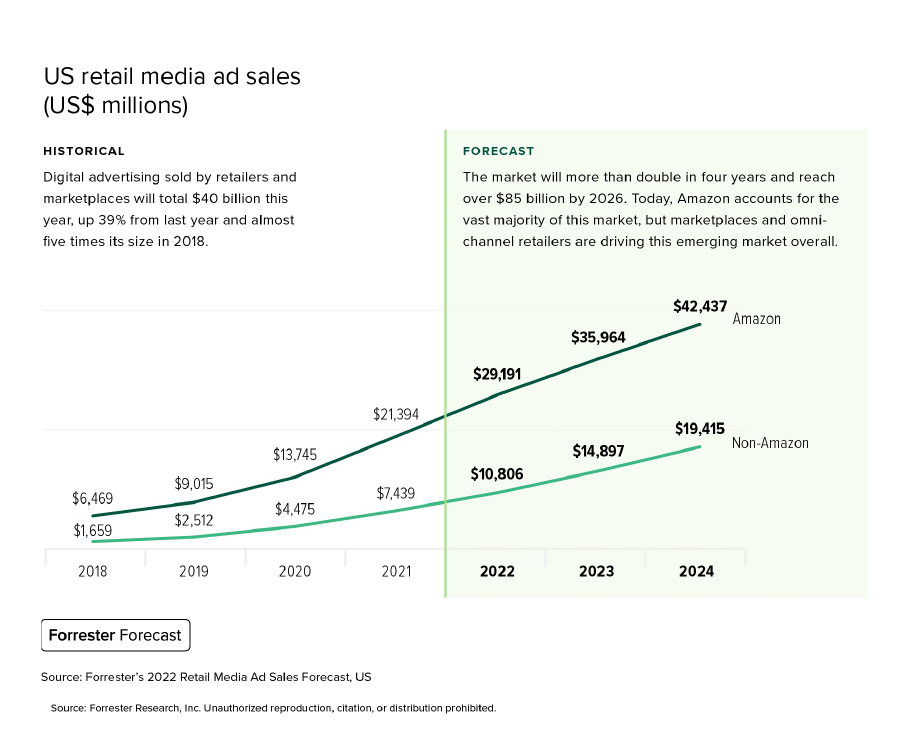
Consumption continues to fragment
It’s becoming harder than ever to reach the right person, at the right time, predict their intent, and get a 360-degree view of your customer.2
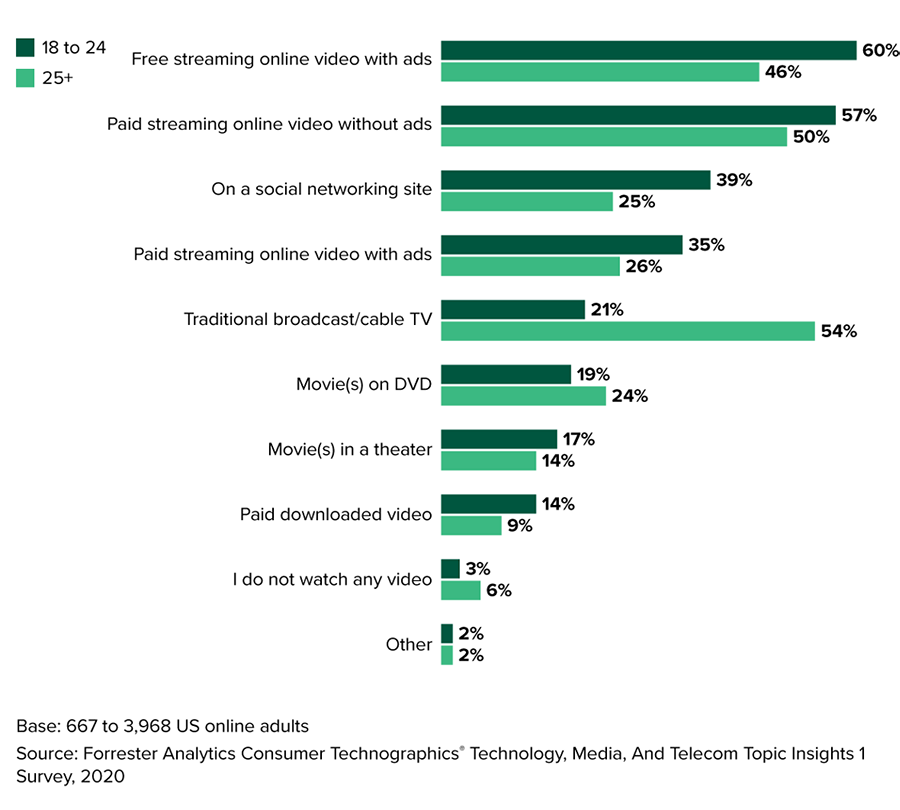
Data deprecation is top of mind
According to Forrester Research, updating their data strategy to address data deprecation is the number one priority for marketers. Addressing data deprecation is also a priority for consumers, who increasingly feel that audience targeting is more intrusive than beneficial.3
Data deprecation affects identity solutions
Third-party data and mobile ad IDs (MAIDs) are the connective tissue for identity solutions. As we see those signals go away, there are fewer linkages to resolve identity and it’s leading to a rise in fragmented, duplicated, and shallow identity.
Recession fears
In addition to everything happening in AdTech, there are also fears of a possible recession. According to Forrester, 40% of Gen Z and 41% of Millennials believe fears of an upcoming recession are greatly exaggerated. On the other hand, only 24% of Gen X and 12% of Baby Boomers agree.4
Navigate uncertainty and marketing in a recession
With the current macroeconomic conditions, data deprecation, and fragmented consumption in mind, what should your strategy look like for marketing in a recession? Forrester recommends three strategies:
- People-led planning
- Test creative
- Optimize for marginal costs
People-led planning
Planning doesn’t have to be fragmented. Map offline and online media exposures to consumer decision journeys. Strategies like lifetime value (LTV) driven audience segmentation to correlate awareness at top of the funnel layered with demand generation exposures harvested later in the funnel. To do this, it’s crucial to work with providers that give you visibility into the audience buyer’s journey to awareness, intent, consideration, and purchase, all the way through to loyalty.5
Test creative
Make your creative work harder for you. Apply the same rigor with your creative that you applied to segmentation. Utilize multivariate testing to identify creative that is winning or losing. When you understand how each variable performs, you can scale the variables with creative optimization to have a material impact on performance.
Optimize for marginal costs
Optimize for marginal costs of acquisition, not just the average. Adjust for incrementality – what is the cost to acquire one more customer, rather than the average cost of acquisition.
Find the right marketing mix in a recession
With these changes in mind, how can you find the right marketing mix in a recession? We can show you the way.
You can create the right marketing mix with three key ingredients:
- Audiences
- Identity
- Activation
Let’s explore each ingredient to start you down the path toward marketing campaign success.
Audiences: Know your customer
The first ingredient to add to your marketing mix in a recession is your audience. Knowing your customer is key to targeting the right audiences successfully. Data-driven targeting can help you find your best audiences based on demographics, modeled lifestyles, and behaviors to improve marketing campaign performance.
Not sure where to start when it comes to developing your target audience strategy? We can help. We track digital usage of our data used by advertisers and identified the top four digital audiences that advertisers purchased over the last four years.
Four digital audiences to consider
Marketing strategies are only as strong as the data foundation they’re built on. The top four digital audiences that advertisers are purchasing from Experian include:
- Demographics
- Behavioral
- Modeled Lifestyles
- Custom Audiences
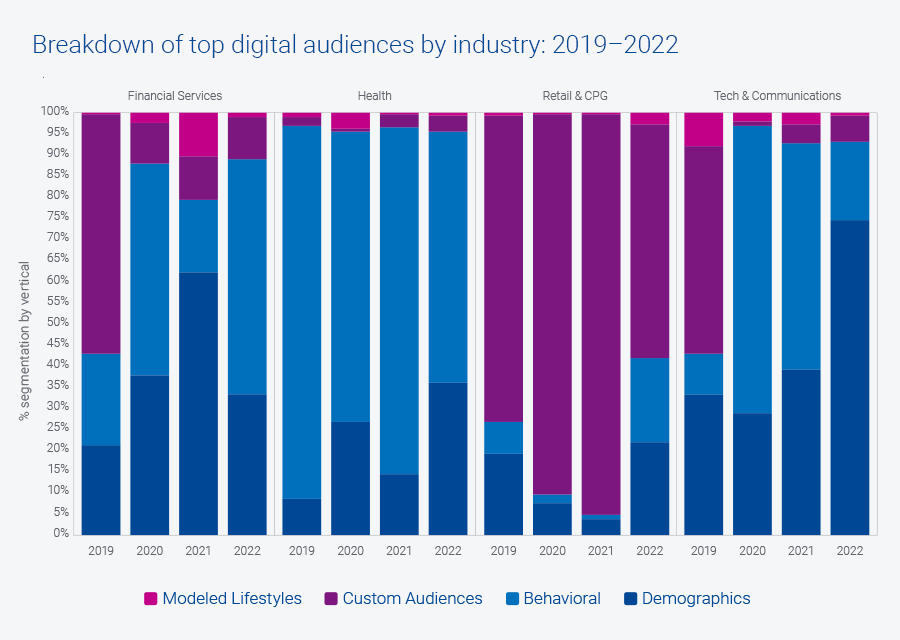
Demographics
Examples include age, gender, relationship status, living situation, life experience, and employment.
Behavioral
This audience allows marketers to identify households that are more likely to engage in certain activities or belong to certain groups.
Modeled Lifestyles
Experian’s Mosaic® USA segmentation. This is a household-based consumer lifestyle segmentation system that classifies all U.S. households and neighborhoods into 71 unique types and 19 overarching groups, providing a 360-degree view of consumers’ choices, preferences, and habits.
Custom Audiences
This is an audience blended from multiple sources or derived from first-party look-alike modeling.
Changes in digital audience strategies
Over the last four years, Modeled Lifestyles and Custom Audience purchases represented the smallest share of digital activation, while Behavioral and Demographic segments were more popular with advertisers.
When the U.S. rolled out the COVID-19 vaccine, consumers became more active. People were shopping in stores, returning to the gym, and taking trips that they had postponed during the height of the pandemic. Marketers turned to higher compositions of Demographic and Modeled Lifestyles to reach these audiences between April and December of 2021.
Sustained growth in Demographic audience activation could suggest a move back to tried and true audience strategies as signals continue to decline and amid evolving regulation. With economic uncertainty, marketers return to what they know. Traditional targeting methods like Demographics and Modeled Lifestyles are the baseline of many marketing strategies and we predict that we will continue to see marketers activating against these data sets.
Download our 2023 digital audience trends and predictions report to discover our full insights on how digital activation has changed and where we’re headed.
Identity: Understand the customer journey
Identity resolution is the next ingredient that you should add to your marketing mix in a recession. It should be a foundational element of every marketer’s strategy.
What is identity resolution? In the simplest terms, identity resolution is the process of matching different devices, IDs, and touchpoints back to a single person. Identity resolution expands marketers’ addressability and reach of their target audience and helps inform and measure accurate customer journeys.
Identity resolution challenges
Identity resolution faces two main challenges:
- Making the data actionable. Humans are complex. We have behaviors that change based on our current social groups and life events, we use dozens of internet-connected devices in a single day, and we exhibit distinct behaviors that happen online and in the physical world. This means marketers have mounds of data being collected from different channels based on that dynamic behavior of people, making it feel impossible to organize the data in a way that makes it feel actionable, know how it ties back to real humans, and ensure they’re doing it in a responsible and compliant way.
- Signal loss. Marketers continue to lose important signals that they’ve previously been able to rely on to inform their next move. Signals are being lost as our industry places more privacy regulations and restrictions on what can be tracked and as consumers themselves change behaviors to protect their privacy.
As consumer behaviors continue to change and signals disappear, identity resolution gets exponentially harder.
Expand addressability and reach with identity resolution
Data deprecation adversely affects identity solutions, but identity resolution should be a key ingredient in your marketing mix. Identity resolution ensures that consumers experience more relevant products, offers, and messaging – allowing you to reap the ROI benefits of hitting consumers at the perfect point in their journey.
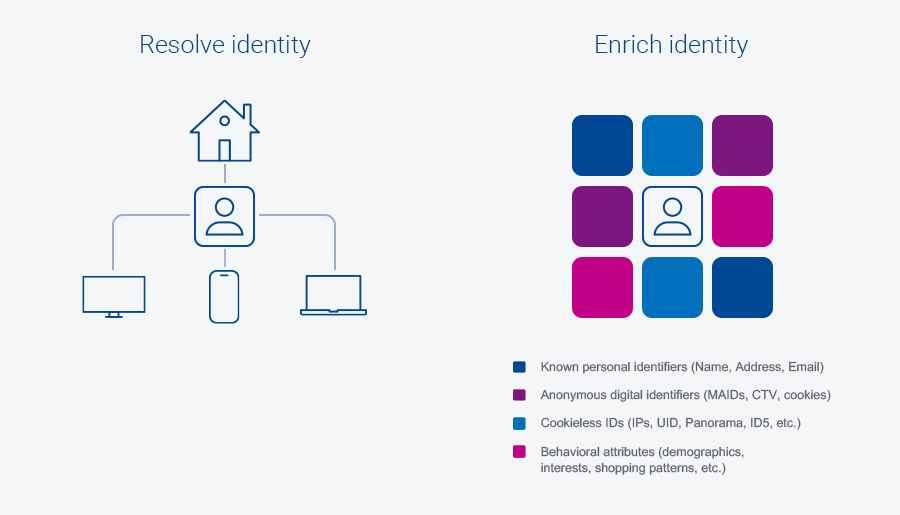
Finding an identity resolution partner
When selecting an identity resolution partner, you should understand the data and processes that are implemented behind the scenes. It’s important to know:
- What makes up their consumer database?
- How fresh is their data?
- What identifiers can they match?
- How do they protect consumer privacy?
At Experian, we’re rooted in deterministic offline data which creates a stable foundation. We then layer in digital and behavioral touchpoints. We have decades of experience managing consumer data safely. We have insights on 250 million individuals, three billion devices, and one trillion device signals. Our databases evolve as quickly as the human behavior powering them does.
Our approach to identity resolution is open and agnostic. This means we can collect and ingest nearly all available offline and online identifiers. We can do this in all types of environments, including connected TV (CTV), mobile, and cookieless. We have two types of identity resolution:
- Offline
- Digital
This ensures we control how known and anonymous data points are connected for consumer privacy purposes.
Identity resolution in action
Our depth of data gives our clients access to see the whole human and gain the context around singular data points.
Let’s walk through an example of our identity resolution capabilities.
Challenge
Our TV media platform client needed to measure the effectiveness of an ad campaign they were running on behalf of a leading consumer electronics brand. The TV platform wanted to be able to accurately report on which consumers made a purchase after seeing the brand’s TV commercial on their platforms.
Solution
Using our digital identity resolution services, our client could capture online purchases made on the brand’s website and link them back to a consumer profile. In addition to online transactions, our client used our offline resolution services to resolve email addresses of consumers that purchased offline, using warranty registration details.
With online and offline purchase data now resolved back to an individual ID, we also performed identity resolution on viewers in their TV subscriber files that had also been exposed to the TV commercial. This allowed us to identify subscribers that had both seen the ad and purchased a product.
We provided our client with a packaged report that they could white-label and pass along to the brand.
Results
By providing this attribution reporting to the brand, the TV platform could validate the ROI spent on their platform. The brand was extremely satisfied with the results, and they transitioned the one-off TV commercial into an ongoing campaign and purchased quarterly measurement. This led to solid recurring revenue for the TV platform.
Activation: Experiment and measure the impact
The third and final ingredient to finding the right marketing mix in a recession is activation. Experimentation is the best way to determine which channels work best for your business and provide the most ROI.
Demand-side platforms (DSP), video platforms, and sell-side targeting are three important activation channels that you should consider experimenting with.

Demand-side platforms
We continue to see increased demand for environments where alternative identifiers are being transacted (like DSPs and video). Social channels are decreasing; this can be attributed to changes in privacy, security, and concerns around brand safety.
Amazon’s DSP is catching up with Google and Meta to become a top ad platform.
Video platforms
Digital video and other video channels like over-the-top (OTT) and CTV will continue to grow. Digital video will capture the most ad spend in 2023 (22.4% in 2023 vs 19.3% in 2022). Because of this, advertisers are placing bigger bets on the combination of addressable and CTV.
Sell-side targeting
Data sharing relationships will become strongest on the sell-side as we move toward consented first-party data. Ad dollars are shifting to channels that use the sell-side approach, like retail media and CTV.
Sell-side targeting enables brands to access large amounts of inventory across publishers and retailers. By getting closer to the ad inventory, advertisers can future-proof their strategies by having more access to better data signals. Direct relationships like these will be necessary as privacy regulations increase and signal loss continues.
We can help you find the right marketing mix in a recession
Now is the time to be opportunistic. Gaining share of voice during a downturn is cost-effective. Proactive marketing builds pent-up demand.
Delivering the right message in the right place at the right time means truly knowing your prospects and customers as individuals. At Experian, we bring you the highest-resolution picture of people, so you and your customers can connect with confidence.
You can turn prospects into customers with the right audience. By understanding your customers better, you can find more like them. Together we can power better results.
Find the right marketing mix
Check out our webinar, “Find the right marketing mix with rising consumer expectations.” Guest speaker, Nikhil Lai, Senior Analyst from Forrester Research, joined Experian experts Erin Haselkorn and Eden Wilbur. Watch the recording to learn:
- New data on the complexity and uncertainty facing marketers
- Consumer trends for 2023
- Recommendations on finding the right channel mix and the right consumers
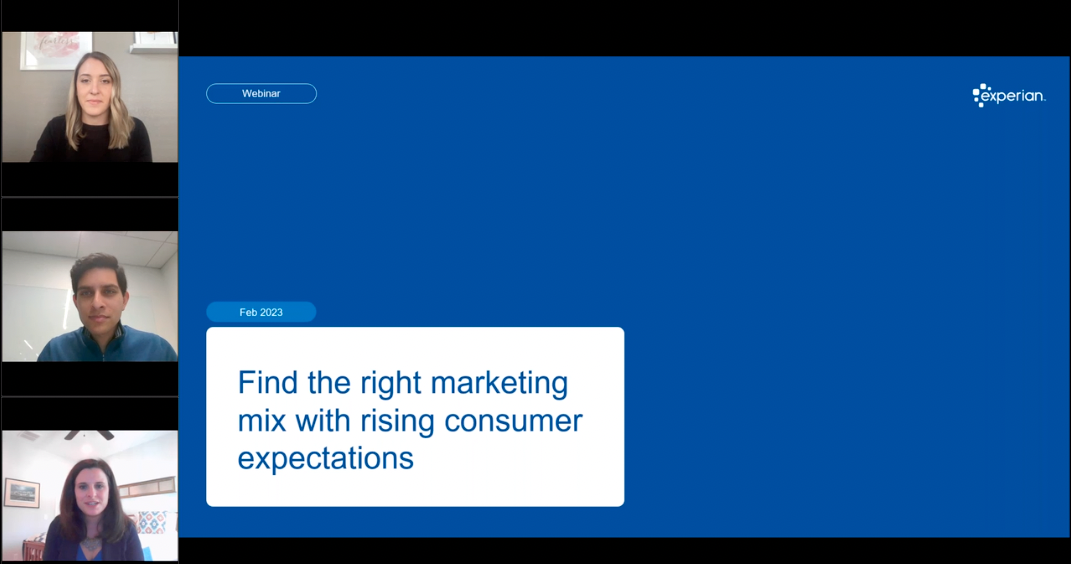
Get in touch
Sources
- 2022 Retail Media Ad Sales Forecast, US. Forrester Research, Inc. 2022.
- Forrester Analytics Consumer Technographics® Technology, Media, and Telecom Topic Insights 1 Survey. Forrester Research, Inc. 2020.
- CMO Pulse Survey. Forrester Research, Inc. July 2021.
- Forrester’s Consumer Energy And Retail Online Survey. Forrester Research, Inc.
- People-Led Planning Solves Customer Problems to Drive Growth. Forrester Research, Inc. August 2, 2021.
Latest posts
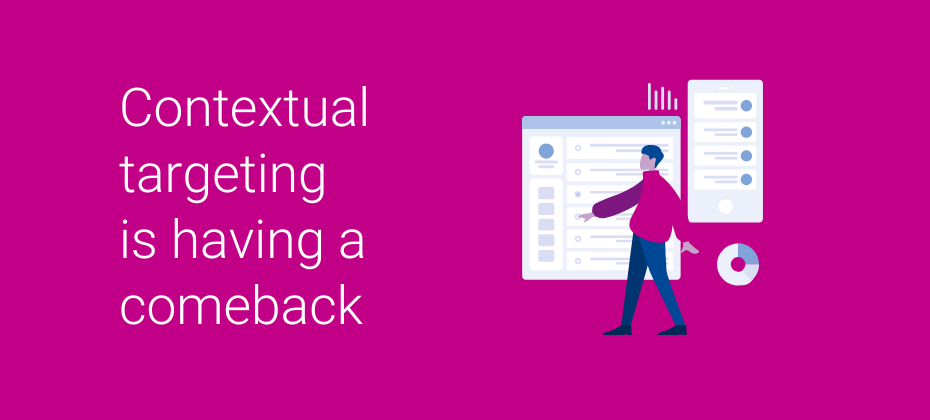
Contextual targeting is having a comeback, and it’s smarter, sharper, and more strategic than ever before. By 2030, annual contextual advertising spend is anticipated to reach $562 billion! As marketers move away from cookie-based targeting and adjust to a privacy-first digital world, contextual advertising is becoming one of the most effective ways to reach engaged audiences. Unlike the basic contextual keyword targeting of the past, today’s contextual strategies are built on data, machine learning, and deep audience insights. Experian, with Audigent, plays a key role in powering this evolution, enabling marketers to execute contextual campaigns with the precision, performance, and compliance needed for today’s environment. Let’s talk about how advertisers are reaching audiences in a changing advertising era with smarter contextual targeting. What is contextual targeting? Contextual targeting, by definition, is a cost-effective, privacy-safe way to engage audiences based on what they’re reading or watching in the moment without relying on personal identifiers. It places ads on webpages that contain content relevant to your product or service. Contextual targeting vs. behavioral targeting The concepts of contextual and behavioral targeting are commonly confused. Both aim to deliver relevant ads, but their methods differ significantly. Let’s break it down. Behavioral: Based on online behaviors Behavioral targeting builds user profiles based on factors like browsing history, clicks, and purchases, tracking users across platforms using cookies and device IDs. For example, if someone researches new SUVs on multiple sites, they might see car-related ads long after they’ve stopped actively looking. While 68% of consumers say they’re concerned about how their data is used in advertising, marketers have the opportunity to build trust through better targeting with Experian. We help brands meet rising consumer expectations with responsible, privacy-forward behavioral data and targeting options that enable you to reach audiences effectively while aligning with your privacy and control needs. Contextual: Based on content and environment Behavioral targeting will continue to play a valuable role in personalized marketing strategies, but contextual targeting is a compelling alternative or complement for strong performance in a privacy-safe, scalable, cost-conscious way. Contextual targeting focuses on the ad environment. It analyzes the page\’s content, such as keywords, tone, and structure, and serves ads that align with that context without personal identifiers or user tracking. With Experian Marketing Data, you can enhance contextual targeting further by layering in data about who’s likely to be on the page. That combination of content signals and audience intent creates smarter, more privacy-compliant campaigns that perform better. Innovations in contextual targeting In its early form, contextual targeting depended on simple keyword matches. While functional, it lacked nuance and often resulted in broad or irrelevant placements. Today, the approach is far more intelligent. Thanks to AI, machine learning, and natural language processing (NLP), platforms can now assess the full context of a webpage, analyzing tone, sentiment, structure, and content depth to determine the best ad match. Contextually-Indexed Audiences Experian’s Contextually-Indexed Audiences take contextual targeting one step further by analyzing traffic from websites and mobile applications to identify the types of frequent visitors to those pages with the power of rich consumer insights. Instead of simply showing up on relevant pages, brands can reach pre-qualified audiences mapped to those environments, combining intent, content, and data-driven strategy in a single solution. This is where contextual targeting is headed and why it\’s no longer just an alternative to behavioral but a strategic advantage in its own right. A privacy-first future Even as third-party cookies remain in use, their long-term reliability is uncertain, and the industry continues moving toward solutions that don’t depend on personal identifiers. Laws like the General Data Protection Regulation (GDPR) and California Consumer Privacy Act (CCPA) have led advertisers to rethink how they engage audiences, shifting focus from individual tracking to content and context. With modern tools, advertisers can use contextual targeting programmatic strategies to reach audiences in privacy-compliant ways that still deliver high performance. Programmatic platforms like demand-side platforms (DSPs) now offer pre-built contextual segments by industry, interest, seasonality, and more. In a few clicks, marketers can launch campaigns that align with content environments where consumers are already engaged without behavioral tracking. For brands looking to future-proof their media strategies, contextual is one of the few options that checks every box. Why more marketers are using contextual targeting Contextual targeting can help you grow your audience, drive web traffic, boost visibility, and increase conversions as data privacy regulations grow stricter worldwide. Here’s a deeper dive into the benefits of this targeting strategy. Connect with ready-to-engage audiences One of contextual targeting\’s greatest advantages is the ability to meet consumers exactly where and when they’re most receptive. It places your ads on pages where they naturally add value to the user experience. When someone is actively reading or watching content about a specific topic, they’re already in the right mindset, which makes your ad feel more like a helpful recommendation than an interruption. For example, if someone is reading a blog post comparing hiking backpacks, they’re far more likely to engage with an ad for outdoor apparel or trail shoes than one for an unrelated product like kitchenware. Drive sales and revenue while lowering costs Another draw of contextual targeting is its affordability for brands with limited budgets. It doesn’t require third-party data, identity graphs, or tracking infrastructure, so it’s easier on your media budget. By aligning ads with page context, brands can also see real business results, such as: Lower cost per thousand impressions (CPM): Since contextual ads are served based on the content of the page rather than user profiles, they often have a lower price tag — especially in verticals where access to behavioral segments may be more competitive. Reduced cost-per-acquisition (CPA): More relevant impressions mean fewer wasted clicks and better ROI. Lower cost-per-click (CPC): On networks like Google Display, CPCs for contextually targeted ads can be as low as $0.45, especially in e-commerce and consumer goods sectors. Higher conversion rates: Ads placed in relevant environments outperform generic placements, which increases the likelihood of action and conversion. Higher lifetime customer value (LTV): Users who arrive at your site from contextually aligned ads are more likely to convert and become repeat customers, driving long-term revenue. Quick and easy setup, built to perform Contextual campaigns can also be launched quickly, often within a day, and produce immediate results. One powerful option is Experian’s Contextually-Indexed Audiences, which combines real-time analysis from over two million websites with access to more than 1,400 trusted audience segments. Available through top demand-side platforms’ contextual marketplaces and Audigent private marketplaces (PMPs), this solution offers a scalable way to reach high-intent consumers without cookies or IDs. Getting started is simple. With a few inputs like relevant topics, keywords, or content categories, you can activate ads in environments where your audience is already engaged. And the best part? The ease and speed to launch doesn’t mean you’re sacrificing results. Because your ads show up alongside content your audience is already interested in, they feel timely and relevant, which leads to more clicks, stronger engagement, and better overall performance. Personalized experience based on known interest Consumers crave personalization. In fact, Deloitte conducted a 2024 study that found 80% of consumers want personalized brand experiences and spend 50% more with the ones that do. Contextual targeting meets that expectation by delivering relevance in the moment without tracking users’ online behavior.Experian’s Contextually-Indexed Audiences use contextual cues across the web to find common sets of audiences and identify where high-intent audience segments tend to show up. This helps advertisers deliver relevant, privacy-safe messaging to consumers who are more likely to engage, thereby building trust, capturing attention, and increasing performance while respecting user privacy. Brand safety Contextual targeting even helps brands avoid reputational pitfalls. With the help of AI and NLP, today’s contextual tools can assess what a page says and how it says it. That means you’re not just protecting user privacy but also your brand by ensuring your ads appear in relevant, trustworthy environments that reflect your values. Contextual targeting examples Contextual targeting works across nearly every industry, helping brands connect with audiences based on the content they’re consuming in the moment. Here are a few examples of this in action across verticals. Contextual targeting for automotive buyers Most car buyers don’t just walk onto the lot. They arrive informed, having begun their journey online, researching makes, models, financing options, trade-in values, and credit requirements. It’s during this discovery phase that contextual targeting shines. Advertisers in the automotive space can serve ads alongside car reviews, dealership comparisons, or articles about electric vehicle tax credits, connecting with shoppers actively gathering information and signaling strong purchase intent. When your ad appears in the middle of that research journey, it feels like the next logical step. Contextual targeting also helps local dealerships and national brands stay top of mind during key decision-making moments without relying on third-party cookies. Contextual targeting for first-time parents New parents are one of the most information-hungry audiences online. From sleep training and stroller reviews to feeding schedules and baby-proofing tips, they consume a massive amount of content across various topics. That content provides a rich canvas for contextual targeting. Brands selling baby gear, wellness products, insurance plans, or parenting services can place ads on relevant articles and forums, connecting with parents when they’re researching their options and making purchase decisions. Contextual targeting for political campaigns Contextual targeting helps political advertisers connect with voters in relevant, mission-aligned environments. In a time when misinformation and divisiveness can influence public perception, maintaining this control is more critical than ever. With contextual targeting, campaigns can place their ads alongside trustworthy, high-quality content that addresses issues relevant to their supporters, whether it’s local policy, national news, or editorial commentary aligned with their platform. Advertisers can also avoid content that may contradict their message or brand values. The future of contextual targeting While Google no longer plans to fully deprecate third-party cookies, the industry has already moved forward. Most marketers have invested in cookieless solutions, and that momentum isn’t slowing down. As contextual targeting becomes even more essential to future-proofing media strategies, its effectiveness depends on the quality and responsibility of the data behind it. That’s where Experian leads the way. Experian Marketing Data as the foundation At the core of Experian’s contextual targeting capabilities is Experian Marketing Data: a rich, privacy-compliant data set built from verified offline sources. This foundational data powers everything we do and fuels the full suite of Experian’s audience and targeting solutions. Marketing Attributes and Audiences One of the key products built from this data is Marketing Attributes, which transforms raw information into detailed, privacy-safe variables like lifestyle preferences, financial behaviors, and media habits. These attributes form the building blocks of Experian Audience solutions, allowing you to create highly specific segments tailored to your goals. When applied to contextual targeting, these segments help you align your messaging with the types of content your ideal audiences are consuming in real time. We’ll help you activate contextually relevant campaigns using real audience insight to place the right message in the proper environment at the ideal moment. Contextually-Indexed Audiences Powered by Experian Marketing Data, Contextually-Indexed Audiences brings a new level of precision to contextual targeting. By analyzing traffic from over two million websites and apps, we offer access to 1,400 audience segments (like luxury shoppers or frequent travelers) that are most likely to visit specific content. This lets you place your message in environments where your target customers already are, combining contextual relevance with data-driven intent. It’s a smarter, privacy-safe way to reach the right people without relying on cookies or user tracking. You can activate these audiences instantly through the top demand-side platform’s contextual marketplace or partner with Audigent to create a custom PMP. A PMP offers more control and flexibility and allows you to enhance campaign performance with additional performance optimization capabilities and activation across any media-buying platforms. Experian collaboration with Audigent and Peer39 Experian and Audigent partner to deliver SmartPMPs, or private marketplace deals that give advertisers access to premium inventory and privacy-first data activation in one streamlined solution. What makes this partnership unique is Audigent’s supply-side integration. Instead of only running audience segments through the DSP, SmartPMPs pair Experian’s high-performing audiences with curated inventory from thousands of publishers, all accessible through a single deal ID. This supply-side approach unlocks: Better reach across CTV, display, video, and more Stronger performance through real-time supply optimizations Personalized campaigns that don’t rely on cookies or user-level identifiers We’ve also partnered with Peer39 and Audigent to expand contextual targeting capabilities further. These partnerships make it possible to match Experian syndicated audience segments, including geo-indexed and behavioral data, to contextual signals in real time. Advertisers can now run fully cookieless campaigns with exceptional scale and performance by indexing Experian Marketing Data through our identity graph and activating through platforms like Audigent’s Hadron ID or Peer39’s integrations. In one beta test with Audigent, a major national advertiser used this solution to run a 15-day campaign that exceeded CTR benchmarks by 25% with no cookies or IDs. Talk to an Experian team member today The future of digital advertising is about trust as much as performance. Turn to Experian for help reaching your audience in the right environments using ethically sourced, privacy-first data. We help brands run scalable, contextually aligned campaigns built for today’s privacy landscape and tomorrow’s performance goals. With tools like Marketing Attributes, Contextually-Indexed Audiences, and Audigent PMPs, we make it possible to connect meaningfully without crossing privacy boundaries. Let’s talk about how we can help you lead the way. Latest posts

Supply-side platforms (SSPs) are expected to deliver more than inventory—they’re being asked to support sell-side targeting strategies, campaign results, and proof of performance. To meet that demand, SSPs need more than access to inventory. They need better data, better tools, and a way to bring it all together. Experian’s solutions for SSPs We built Experian’s solutions for SSPs with that demand in mind. By combining identity resolution, audience targeting, and third-party measurement, we help platforms move beyond basic transactions. Whether you’re doing sell-side targeting, supporting direct deals, or looking to support campaign validation, our tools make it easier to create value for buyers—and keep them coming back. Our solutions that help SSPs: Resolve identity across digital touchpoints using our industry-leading Digital Graph Build differentiated audiences using over 2,400 Experian Audiences and Partner Audiences in Audience Engine Support advertiser-direct relationships with tools to create, activate, and host custom segments Measure real outcomes like in-store visitation and sales through Outcomes, our third-party validated reporting suite Together, these capabilities allow SSPs to produce data-driven deals, increase addressability, and meet buyer demand for smarter, more measurable media. Campaign snapshot: Yieldmo + Experian Yieldmo, an advertising platform known for its creative formats and data-informed approach, has already put this solution to work. Here’s how they built a custom strategy for a major athletic retail client using Experian\’s joint solution for SSPs. The challenge: Drive in-store traffic and reach new buyers Yieldmo supports a leading athletic retailer’s seasonal campaigns focused on in-store traffic. This advertiser wanted to reach new buyers—specifically those who might otherwise shop with a competitor. To do this, they needed access to strong audience segments with reliable data and the flexibility to act quickly across channels. This was the first time Yieldmo applied Experian Audiences to this retailer’s campaigns. The stakes were high: the client was looking for better in-store outcomes and a more streamlined activation workflow. The solution: Experian\’s activation solution for SSPs Using Experian’s Audience Engine, which includes our proprietary and third-party data marketplace, Yieldmo built a flexible, high-performing media plan that spanned display inventory and included both conquesting and primary in-store shopper segments. The team selected and activated: Apparel and footwear audiences built from Experian and partner data providers In-store shopper segments targeting retail behavior signals Competitive purchasers to capture likely buyers from other athletic brands Our data marketplace allowed Yieldmo to combine Experian Audiences with Partner Audiences from providers like Alliant, Circana, Sports Innovation Lab, and Webbula—all in one place. Manual audience creation used to take days. Now, Yieldmo can build and activate campaigns through a streamlined, self-serve workflow. By working in the Audience Engine platform, Yieldmo was able to avoid multiple contracts and manual requests. They filtered audiences by brand, tailored segments to their goals, and launched without delays. “Experian’s data marketplace in Audience Engine fills a critical gap—letting us quickly search by brand, build smarter conquest segments, and activate custom audiences fast.”Abby Littlejohn, Director of Sales Planning, Yieldmo The results: Expected lift in store visits While final in-store lift results are pending, the early performance metrics are promising: Click-through rates are at and above historical benchmarks across both conquesting and primary shopper segments. Using Audience Engine’s self-serve tools, Yieldmo created audiences faster and more easily. They reduced their workload by minimizing the need for manual data wrangling. “We include Experian audience segments in 80% of formal RFPs. Between contract simplicity, data quality, and campaign results, Experian has become our go-to for third-party audience targeting.”Nelson Montouchet, AVP, Strategic Partnerships, Yieldmo Download the full case study Bring this to your platform Whether you’re looking to monetize more effectively, build deeper advertiser relationships, or stand out with sell-side targeting offerings, we designed Experian’s solutions for SSPs to do exactly that. With our industry-leading Digital Graph, over 2,400 syndicated audiences, partner data, flexible self-serve tools, and outcome-based measurement, SSPs can now move faster and go further—without compromising scale or precision. Get in touch with our team Latest posts

After another week under the sun at Cannes Lions 2025, one thing is abundantly clear: our industry is done talking about possibilities — it’s ready to act. From speaking engagements to packed suite meetings, and even stateside through our “Can’t Cannes” activations, the appetite for change was real — and we were right at the center of it. A front-row seat to innovation Experian made a powerful impact across the Croisette, partnering with Audiostack, Basis, Infillion, IQVIA, Magnite, NextRoll, Odeeo, OpenX, The Female Quotient, and the Unplugged Collective x The Digital Marketer, to contribute to some of the week’s most insightful conversations. Our thought leaders were everywhere—on stage, in studio interviews, at executive roundtables—offering a clear voice on retail media growth, pharma advertising disruption, AI innovation, and identity-driven personalization. Three themes that defined the week 1. AI gets real If 2024 was the year of AI buzz, then 2025 is the year AI found its footing. Conversations shifted from “what if” to “what now.” While the promise of AI was front and center, conversations with clients and partners highlighted that we’re still in the foundational phase. Real-world applications—from creative optimization to predictive segmentation—are gaining traction, but long-term value will depend on robust data architecture and trustworthy identity frameworks. MiQ and PMG debuted AI-integrated platforms that demonstrated how AI can automate creative, optimize budget allocation, and personalize media in real time. AI has moved from sidekick to strategist. \”Last year it was all about AI, but in a very general sense. This year, it’s about specific applications — a clear sign AI is evolving from a talking point into product.”Budi Tanzi, VP, Product 2. Outcomes > impressions Outcomes may have been a buzzword at Cannes, but as several industry leaders pointed out, simply saying “we drive outcomes” isn’t enough—it risks sounding like table stakes. In today’s performance-driven environment, what matters is how companies define and deliver those outcomes in unique ways. The most compelling conversations weren’t about generic promises, but about clear strategies: challenging assumptions, leaning into strengths, and making specific choices that tie data, media, and technology to measurable impact. \”By using consistent identity across planning, activation, and measurement, marketers can connect ad exposure to real-world outcomes—whether that’s an online conversion, an in-store visit, or a new customer relationship.\”Chris Feo, Chief Business Officer 3. Curation isn\’t just a tactic Curation is quickly becoming the industry’s preferred approach to cutting through complexity. As marketers contend with signal loss and inconsistent inventory quality, the shift from broad access to intentional activation is gaining momentum. At Experian, we see curation not just as packaging, but as strategic alignment—where identity, data, and inventory come together in purpose-built environments that reduce waste, enhance safety, and drive performance. \”Supply-side data activation and optimization, aka “curation,” is an alternative to the traditional approach to data activation. Unlike the traditional DMP-to-DSP activation flow, curation allows buyers to leverage supply-path data more directly. The upshot? Improved performance and pricing for media agencies and brand advertisers.\”Drew Stein, Managing Director, Audigent Bringing the Cannes experience stateside Not everyone can make it to the South of France—so we brought Cannes to them. Our “Can’t Cannes” events in the U.S. offered local clients a first-class experience filled with insights and networking, minus the jet lag. Final takeaways This year’s festival made one thing clear: real progress requires more than innovation; it requires integration. And that’s where Experian is focused—connecting identity to activation, and data to outcomes, in ways that are practical, scalable, and privacy-resilient. If I had to sum it up? AI is progressing from abstract to application Curation beats clutter Partnership is power And everyone’s aligned around performance We’re grateful to have been part of these conversations and even more excited about where they’ll lead next. Let’s continue the conversation If you\’re exploring how to connect identity to performance, or simplify the way you activate, measure, and grow, we’d love to talk. Latest posts